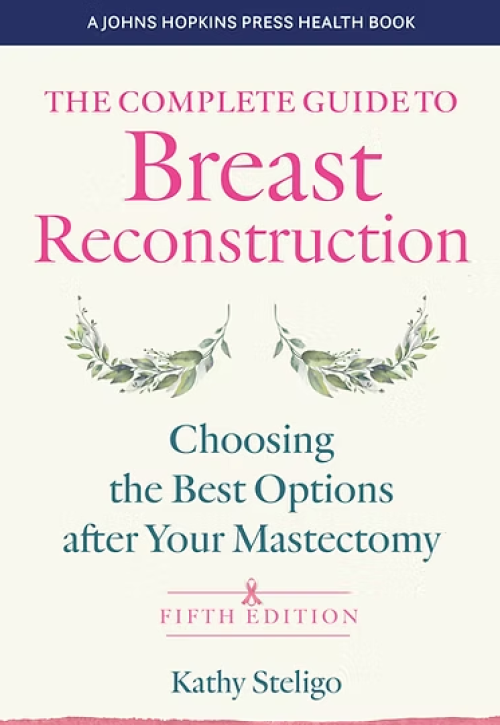Options for Breast Reconstruction
Breast Reconstruction Options
Breasts can be reconstructed using implants, your own living tissue or a combination of the two. Visit our password-protected photo and video gallery to view real outcomes shared by community members or to upload your own photos or videos to share with others.
This section covers the following topics:
What are the steps for breast reconstruction?
Most reconstruction involves two or more operations over several months.
- The initial surgery forms the breast mounds (breasts without nipples).
- A shorter surgery later refines the shape and size of the new breasts and (if needed) creates nipples.
- Tattooing adds color to the nipples, simulates the areolas and completes the reconstructive process.
Reconstruction with breast implants
Most breast reconstruction involves implants that are filled with soft, thick silicone gel (saline implants are used less often). Implants may be placed under or over the pectoral chest muscle. Implants are not lifetime devices and eventually must be replaced.
Implant procedures include:
- Expander-to-implant reconstruction: A temporary expandable implant is placed into a pocket under the chest muscle and is then gradually inflated over a few weeks in a plastic surgeon’s office. Expansion stretches the chest skin and muscle until the pocket is large enough to fit the desired implant. A shorter surgery then replaces the expanders with implants that best fit the chest anatomy and desired size.
- Direct-to-implant reconstruction (also known as "one-step): Nipple-sparing mastectomy and reconstruction can be completed in a single operation. This is known as "direct-to-implant" breast reconstruction. A full-sized implant is secured into place with an FDA-approved acellular dermal matrix (a type of tissue graft made from animal, human or synthetic tissue), so no expansion is needed. With this reconstruction, the implants may be placed under or over the muscle, depending on patient and surgeon preferences. Not all surgeons perform this type of reconstruction.
Textured breast implants (especially textured silicone implants) and textured tissue expanders are linked to a very rare cancer known as Breast Implant-Associated Anaplastic Large Cell or BIA-ALCL. Although the cancer is rare, the recalled Allergan BIOCELL textured implants and expanders (see full list of devices here). This means that surgeons in the U.S. no longer use these devices for breast reconstruction or augmentation. The does not recommend removing textured implants when there are no symptoms of BIA-ALCL or other implant-related complications because the risk of developing this disease is very low.
Screening for breast implant rupture
The recommends periodic imaging (e.g., , ) of silicone gel-filled breast implants to screen for implant rupture. Implants must be labeled with this recommendation. Patients with these implants should have an or 5-6 years after their initial implant surgery and every 2-3 years thereafter, even if they have no symptoms. The also recommends that anyone who has symptoms at any time or uncertain results for breast implant rupture should undergo a breast .
Visit our section on Preparation and Recovery for additional risks associated with breast implants and other types of reconstruction.
Reconstruction with living tissue
Breasts can be reconstructed using excess fat, skin, and/or muscle removed from the tummy, hips, back, buttocks or thighs. This is known as "autologous breast reconstruction."
Older techniques, including and Latissimus Dorsi, remove muscle from the donor site, which can lead to pain or muscle weakness. Newer techniques, known as "perforator flaps" include , PAP, SIEA, GAP, TUG and others. These methods produce similar cosmetic results using only fat and skin and sparing the muscle. These muscle-sparing methods require a specially trained microsurgeon who connects blood vessels in the to blood vessels in the chest. The overall timeframe for completing reconstruction is shorter than breast reconstruction with tissue expansion, but it is more invasive and requires longer surgery and recovery times. Unlike breast implants, tissue flaps last a lifetime without needing to be replaced.
Risk-Reducing Mastectomy
Risk-reducing mastectomy lowers the risk for breast cancer in high-risk individuals. Read more about this procedure.
Nipples and Areola
People who do not have nipple-sparing mastectomy may choose to have nipple reconstruction and areola tattooing. Learn more about these procedures.
Going Flat
Some people choose not to have reconstruction after mastectomy. Learn more about going flat and a procedure known as aesthetic flat closure.
Preparation and Recovery
Learn about the steps that you can take to prepare for mastectomy and reconstruction and help with recovery.
Photo and Video Gallery
View images and videos of mastectomy with and without reconstruction shared by members of the FORCE community.
Checklist and Tip Sheet
View questions to help you make medical decisions and tips to help you prepare for and recover from surgery.
The following resources can help you find a plastic surgeon who specializes in breast reconstruction:
Finding a plastic surgeon
- The American Society of Plastic Surgeons has a searchable Plastic Surgeon Referral Service database.
Other ways to find experts
- Register for the FORCE Message Boards and post on the Find a Specialist board to connect with other people who share your situation.
- The website for The Complete Guide to Breast Reconstruction provides information on Choosing the Right Surgeon.



